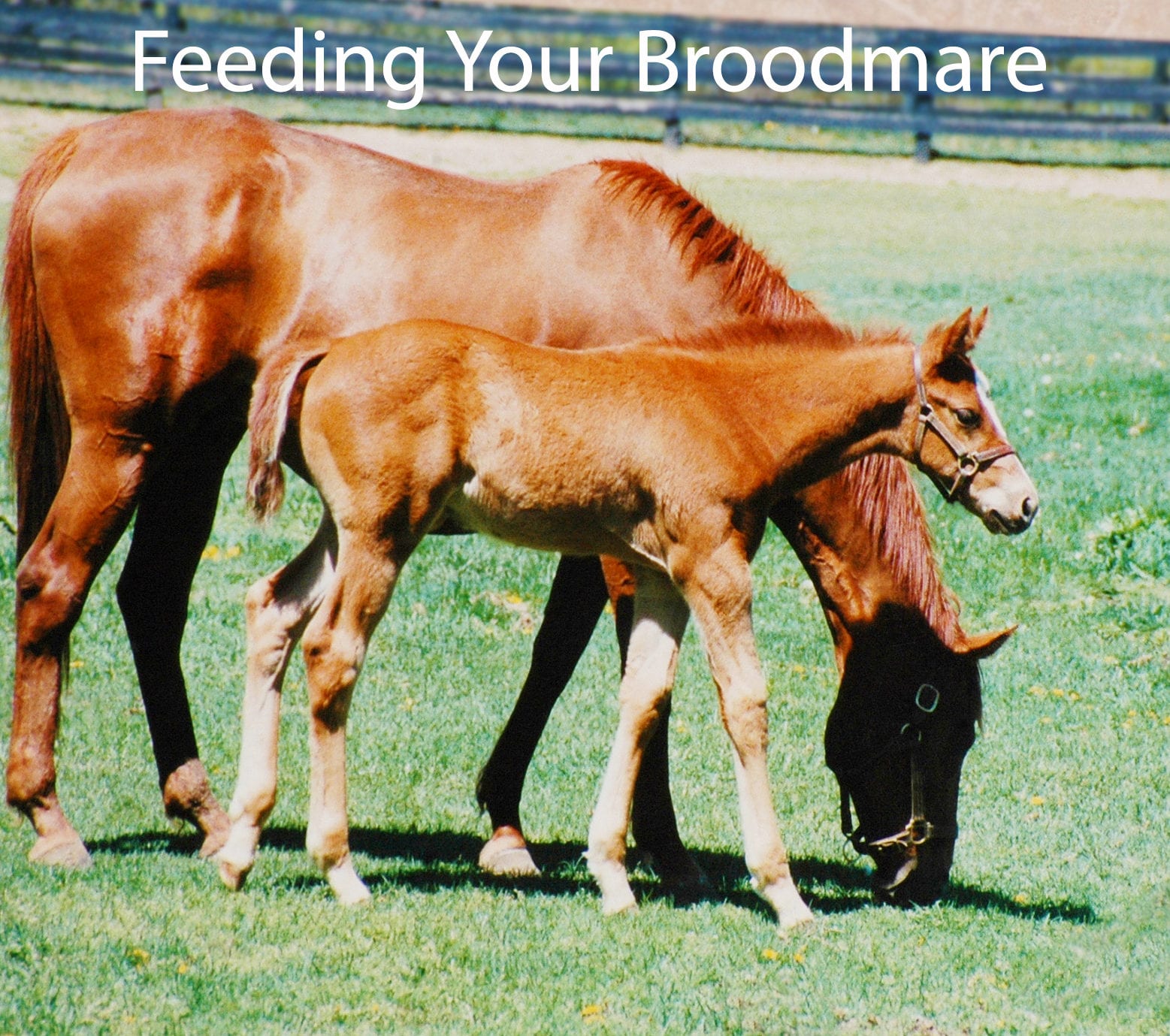
10 Nov Feeding your Broodmare – Before and After Pregnancy
Feeding your broodmare the correct diet before and after pregnancy is extremely important. Nutritional requirements can change drastically in this time, and it’s important that we keep this in mind when choosing what and how much to feed; not only will this impact on the health of the mare, but the health of the foal will be affected as well.
Pregnant Mares
Early pregnancy places little extra nutritional demand on the mare as the foetus is small and developing slowly. These mares will be quite happy on a maintenance type of diet, fed to a level that keeps them healthy and in good condition. Usually only around 3kg supplementary feed is needed daily depending on pasture availability and quality.
From around 7 months of gestation, development starts to accelerate, and particularly in the last 3 months’ nutritional demands are significantly increased. This is in large part due to mineralization of the foetal skeleton, which increases daily calcium and phosphorus needs of the mare by around 80 and 90 percent respectively. Protein and lysine requirement goes up around 40% and energy needs by 30%.
Unless mares are on high quality improved pasture, a good supplementary feed is required (particularly from late spring onwards as paddock feed matures and dries off). THOMPSON & REDWOOD Horse Grower Weaner Pellets have been formulated to fill that gap in broodmares and foals nutritional requirements. 3 to 4kg daily with pasture or hay to appetite will provide the extra needs for sound foetal development.
Lactating Mares
Early lactation sees the biggest jump in nutritional demand; energy needs are greater than a horse in full race work, protein and lysine requirement jumps 70 and 120 percent over pre-foaling, and calcium and phosphorus rise 60 and 45 percent.
This is obviously because the mare is pouring a lot into milk production (good mares will produce 16kg+ of milk daily, and foals will be growing in excess of 1kg per day). Therefore, lactating mares need a lot of feed – around 3% of their body weight daily – and around half of it needs to be good quality.
It is important that supplementary feed has a good small intestine digestibility so that nutrients are readily available (protein, or more specifically its amino acids, cannot be absorbed in the hind gut, so not all of the protein in hays and pasture is available to the mare). Quality also takes into account specific amino acids levels, i.e. the essential amino acids, as these cannot be made in the body and have to be available in the diet. Lysine in particular is likely to be deficient in horse feeds not specifically supplemented and low lysine means milk proteins cannot always be made at an optimal rate.
THOMPSON & REDWOOD Horse Grower Weaner Pellets use protein and energy sources that are well digested in the small intestine, and are fortified with lysine and methionine to provide an optimal essential amino acid profile to support lactation and growth.
Provide 6-8kg per mare daily (depending on pasture quality and availability), and especially if pasture is poor allow free choice cereal hay. The hay is a good contributor to energy requirements and is good for hind gut health. It also gives the horses something to do as they would normally spend many hours a day grazing, and ensures they are not starving when the supplement is fed. In addition, space feeders so that all mares have easy access to the feed and foals are not at risk of being bullied.
Foals will quickly mimic feeding behaviour and many will start nibbling the pellet from as young as a couple of weeks of age. The high quality and digestibility of Horse Grower Weaner Pellets means that it can contribute to their growth needs from an early age. This is particularly important if mares are not good milk producers and of course when milk production starts to drop off after a couple of months.
It has the additional benefit that if foals have had access to the pellet, they can be weaned straight on to it with minimal disruption to feeding behaviour. For this reason, although the mares’ needs will have dropped off by weaning at 5 to 6 months, I usually keep the daily feed rate the same as the foal will get the benefit directly.
This article was written by Dr Brad Hampton BSc, BVMS MACVSc.
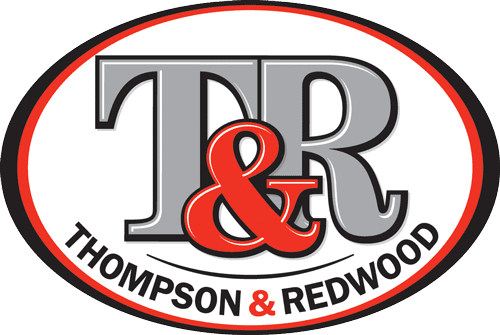

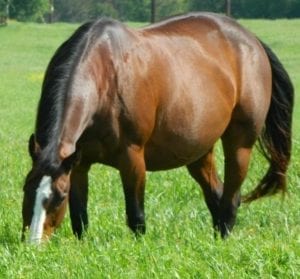
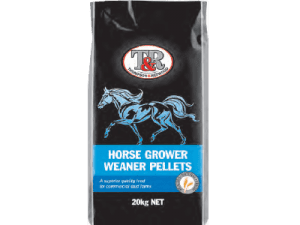
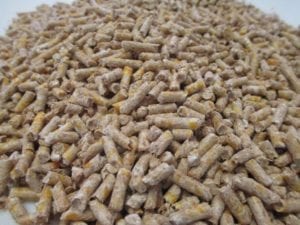

No Comments